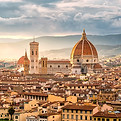
Isfahan, Iran - Attractions, Culture, History, Tourism, Fun Facts
Welcome to Isfahan City, where history, culture, and breathtaking architecture create an unforgettable experience. Home to the iconic Isfahan mosque(Shah Mosque) and many more renowned Isfahan tourist attractions, this city is a must-visit for travelers. Whether you're exploring its rich heritage, discovering places to visit in Isfahan, or wondering what to do in Isfahan, every corner offers something remarkable. Plan your Isfahan travel experience today and uncover what makes Isfahan famous!

Isfahan Population
With a population of around 2,220,000, Isfahan ranks as the third-most populous city in Iran, following Tehran and Mashhad, and is the second-largest metropolitan area in the country.

Isfahan Climate
Isfahan, situated at 1,590 meters above sea level in the Zagros Mountains, experiences a cold desert climate with hot summers and cool, sometimes very cold winters. Despite its altitude, the city remains hot in summer, with a relatively low annual precipitation of 125 millimeters, contributing to an extremely dry climate.

Isfahan Things to Do
Isfahan holds many iconic landmarks such as Naqsh-e Jahan Square, Shah Mosque, Jameh Mosque, and Ali Qapu Palace
Isfahan Attractions and Landmarks
City of Isfahan Fun Facts
Dive into Isfahan's fun facts, a mix of history, culture, and surprising details that make it special.

Half of the World
Isfahan has thousands of historical monuments leading to the saying “Esfahān nesf-e-jahān ast” (Isfahan is half of the world)

Isfahan History
Isfahan was a religious and ethnically diverse city, even considered to be one of the largest cities in the world at one point. Ranked among places such as Athens, Rome, London, Paris, and Istanbul

Fire Temple
Home to the fire temple of Isfahan, which is dedicated to the Zoroastrian faith and is an important pilgrimage site for Zoroastrians

Chehel Souton
The name of the palace directly translates to “40 columns”, but only features 20 columns. When reflected against the pool, 40 columns are showcased

Isfahan Nickname
Isfahan is often referred to as the Florence of Iran

Capital of Persia
Under the Safavid dynasty, Isfahan became the capital of Persia, for the second time in its history, under Shah Abbas the Great.









